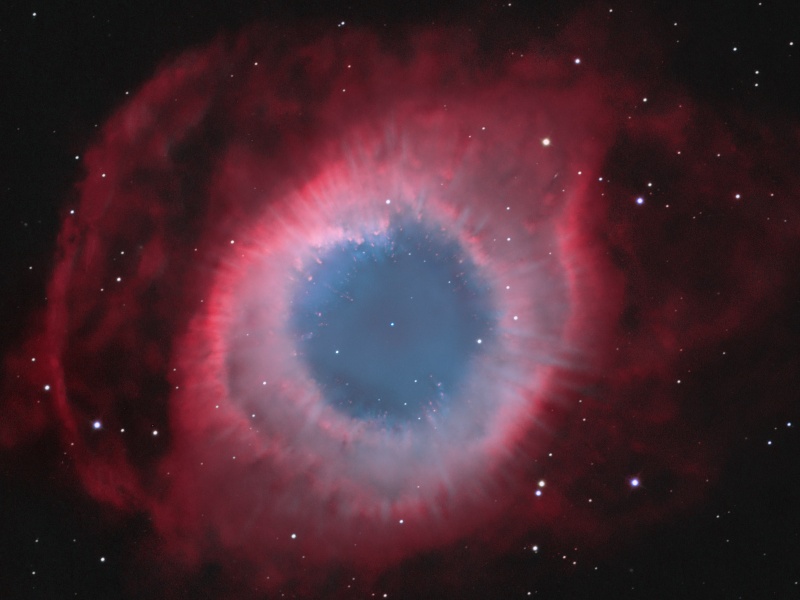
|
Credit & Copyright: Don Goldman,
Sierra Remote Observatories
Explanation:
At first glance, the Helix Nebula
(aka
NGC 7293), looks simple and round.
But this well-studied example of a
planetary nebula, produced
near the end of the life of a sun-like star, is
now understood to have a surprisingly
complex geometry.
Its extended loops and comet-shaped features have been
explored in Hubble
Space Telescope images.
Still, a 16-inch diameter telescope and camera with broad and
narrow band
filters was used to create
this sharp view of the Helix.
The color composite also reveals the nebula's intriguing details,
including light-year long, bluegreen radial stripes or spokes that
give it the appearance of a cosmic bicycle wheel.
The spoke features seem to indicate that the Helix Nebula
is itself an old and
evolved
planetary nebula.
The Helix is a mere seven hundred light years from Earth,
in the constellation
Aquarius.
|
January February March April May June July August September October November December |
| ||||||||||||||||||||||||||||||||||||||||||||||||
NASA Web Site Statements, Warnings, and Disclaimers
NASA Official: Jay Norris. Specific rights apply.
A service of: LHEA at NASA / GSFC
& Michigan Tech. U.
Based on Astronomy Picture
Of the Day
Publications with keywords: planetary nebula - Helix Nebula - NGC 7293
Publications with words: planetary nebula - Helix Nebula - NGC 7293
See also:
- APOD: 2025 August 31 Á NGC 7027: The Pillow Planetary Nebula
- APOD: 2025 August 22 Á A Tale of Two Nebulae
- APOD: 2025 August 5 Á NGC 6072: A Complex Planetary Nebula from Webb
- APOD: 2025 July 29 Á A Helix Nebula Deep Field
- APOD: 2025 July 13 Á Planetary Nebula Mz3: The Ant Nebula
- APOD: 2025 June 9 Á Between Scylla and Charybdis: A Double Cosmic Discovery
- APOD: 2025 May 14 Á NGC 1360: The Robins Egg Nebula
